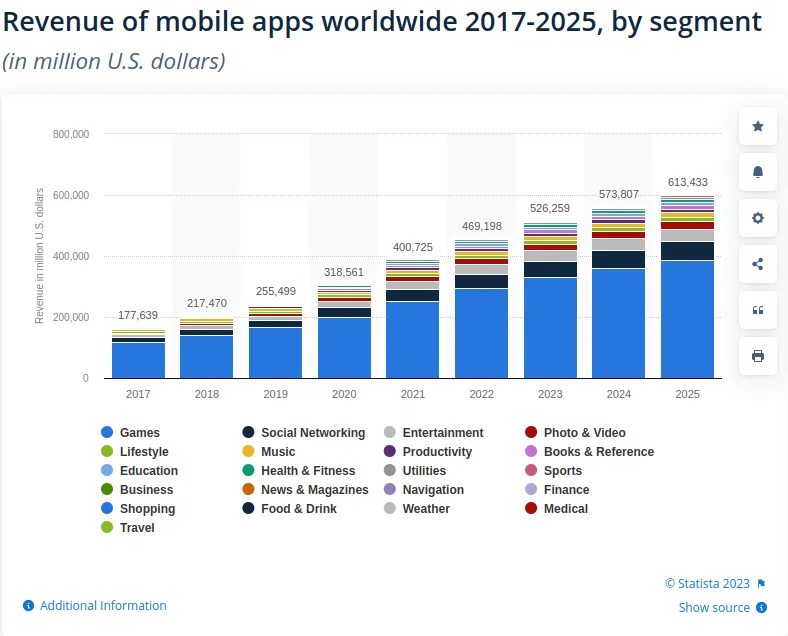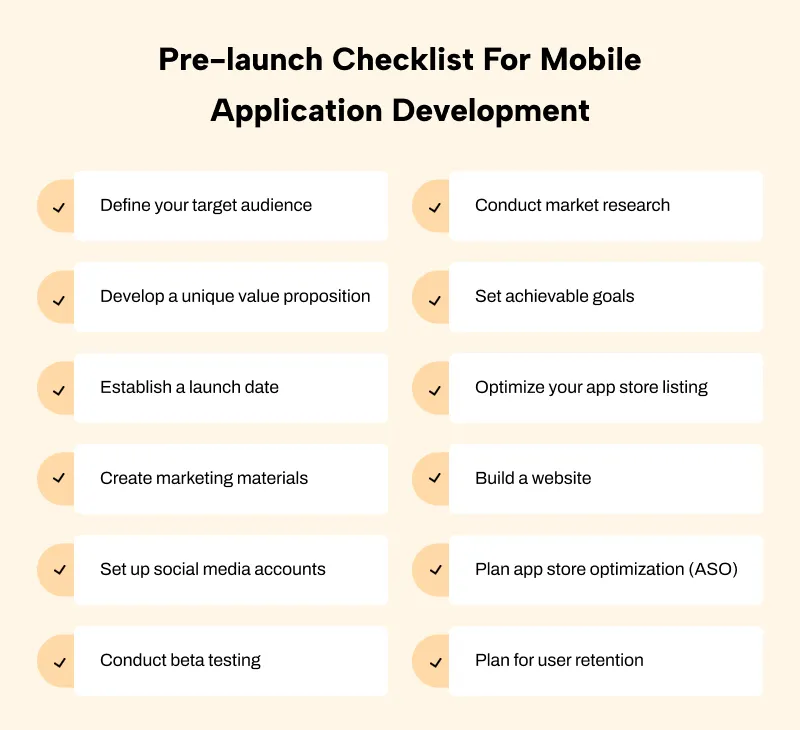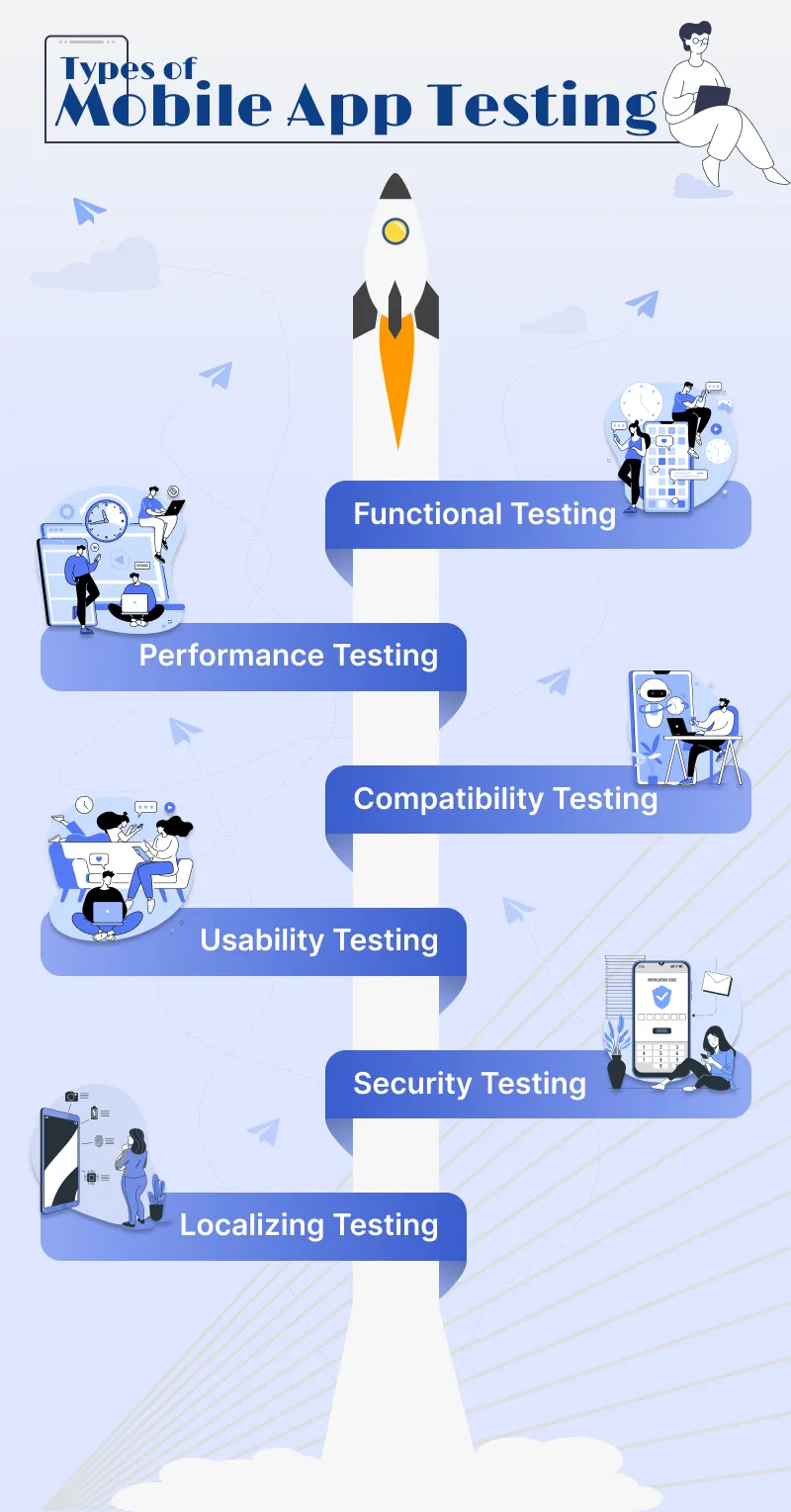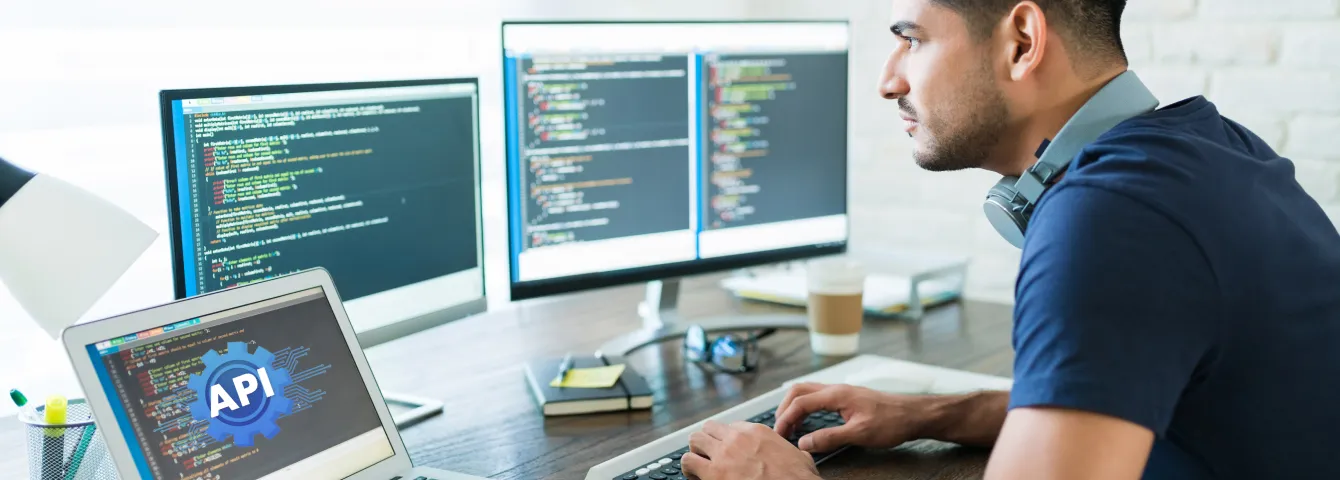The Statista Digital Market Outlook estimated that the global revenue from mobile apps will increase in the coming years and reach around 613 billion U.S. dollars by 2025. To leverage the benefits, businesses increasingly invest more and more in application development. Some succeed; however, many still need help to meet their goals and figure out where they are lacking.
To create phone apps, businesses must follow the process appropriately; if not done correctly, the chances are your project might not be successful. No matter how trendy your mobile app development technologies are, if you don’t follow the correct process, you might always be stuck in the loop of never-ending attempts.
To ensure success, you should follow the complete guide to app development that we will outline in this blog. By following these stages, businesses can increase the likelihood of creating a successful mobile app or web development project.
Get free consultation and let us know your project idea to turn it into an amazing digital product.
Stage 1: Idea Generation & Conceptualization
The first stage of the mobile app development process is idea generation & conceptualization. This is when businesses should focus on identifying the problem the application will solve. There should be a clear concept of how your application will work and help your target audience.
This stage lays the foundation for the mobile app development process; however, the idea needs to be more specific and problem-oriented as per your target audience.
There should be thorough research & analysis on whether the app idea is solid and viable. Businesses should analyze their competitors’ applications and identify potential gaps in the market. Whether defining your application idea or finding a framework for mobile app development, here are a few questions to ask before deciding:
Here are some questions to ask yourself:
- What problem does my app solve?
- Who is my target audience?
- What features will my app have?
- How will my app differ from existing solutions?
- What is the revenue model for my app?
- What is the budget for developing and marketing my app?
- What is the timeline for developing and launching my app?
- How will I market and promote my app?
- What is the long-term vision for my app?
- How will I measure the success of my app?
Once the research is complete, you can move to other mobile app development processes. Hence ideation and conceptualization are critical stages in mobile app development, and businesses should invest their time and effort to ensure the app’s concept is well-defined.
Stage 2: Wireframing & Prototyping
The next stage of app development is wireframing and prototyping, which help businesses create a blueprint for their application. It outlines the layout and functionality of each screen and the complete user experience.
- This stage includes developing simple sketches of each screen, like the placement of the buttons, images, and all the other design elements. It is one of the crucial requirements for app development because the design is the first thing the target audience connects with.
- With the help of wireframing and prototyping stage, businesses can map out the user flow and recognize potential issues in the application design. Identifying these inefficiencies early can save time and money for companies.
- Prototyping is taking the wireframe and turning it into a functional prototype. It allows businesses to test the application with users and gather feedback on the design and functionality.
- This feedback can refine the application, ensuring it meets the target audience’s needs and is easy to use.
Overall, wireframing and prototyping are significant stages for businesses because they enable them to create an application that meets the needs of their target audience, is easy to use, and provides a seamless user experience.
By investing time and resources in these stages, businesses can ensure that their application succeeds and provides value to their customers.
Also Read: The Future of Healthcare Software Development: Emerging Trends for 2023
Stage 3: Design & User Interface
Once you complete the previous two stages, the third stage of creating a phone app is designing the mobile app’s user interface (UI). It is one of the critical phases of app development where the prototype and wireframe are transformed into a visually appealing & intuitive design that is attractive and user-friendly.
A well-designed and aesthetically pleasing mobile application can engage and lead to increased usage and customer satisfaction.
There are affordable custom-application development services companies that you can hire to ensure the efficiency of the project, as they have a team of skilled professionals.
Here is how design and UI can strengthen your mobile app:
- Design & UI creates a positive first impression on users & enhances engagement.
- An intuitive UI reduces the time & effort required for app development by improving the user experience.
- An aesthetically pleasing and well-designed application demonstrates the business’s commitment to quality and attention to detail.
- Businesses can strengthen their customer satisfaction, loyalty, and brand advocacy.
- A well-designed UI reduces the time and effort needed to accomplish tasks, improving the user experience.
Many companies hire mobile app development services to ensure the best quality but ensure they follow the correct process. Because the significance of the design & UI is multifaceted for the businesses as it is responsible for the first impression on users.
ValueCoders has a team of experienced professionals who can support you with your android application development services. The company has a demonstrated history of building successful mobile apps, such as a local community app and a store-finding mobile app.
Get free consultation and let us know your project idea to turn it into an amazing digital product.
Stage 4: Development
Here comes the pivotal stage, development, where the application is functionally coded and developed. This stage comprises translating the design UI into existing software that the end-users can use. Here is how the development process can strengthen the application:
- Brings the design to life: The development process turns the design & user interface (UI) into a functional application for the end-users.
- Creates a custom solution: The development stage allows businesses to create a custom solution that meets their needs & requirements.
- Improves scalability: This mobile app development process ensures that the application is built in a scalable manner that can accommodate growth and hold increased usage.
- Provides greater control: The development stage gives businesses greater control over the application’s functionality, allowing them to customize and modify features as needed.
- Cost savings: By developing the application in-house, businesses can avoid the costs associated with hiring dedicated software development teams.
You can hire mobile app developers in India who can deliver you the best services at a reasonable cost. The development stage brings design, creates custom solutions, improves scalability, provides greeted control, and can result in cost–savings. Investing in the design stage can ensure the success of your mobile app development process.
By investing in the development stage, businesses can ensure that their application is built to their specific needs and requirements, resulting in a high-quality and effective product.
Also Read: A Complete Timeline Guide For Web App Development | 2022-23
Stage 5: Testing
Here comes the next stage of app development, testing. It is a critical phase in the mobile app development process. The process involves identifying and fixing bugs, errors, and other issues in the application before it is launched for users.
This process ensures the mobile app is bug & error-free and performs well per the user’s expectations. The testing is done through various methods to assess the performance and functionality of the app:
- Manual Testing: In this type of testing, humans manually test the cases to identify the defects in the software. Manual testing can be time-consuming and error-prone; however, it is still an essential part of the testing process, especially for testing the user interface and other areas that are difficult to automate. So, hire dedicated software development teams who can work on your project full-time and be available.
- Performance Testing: This type of testing aims to evaluate the performance of the software under various load conditions like high traffic or heavy usage. The goal is to ensure the software is responsive, stable, and scalable under diverse scenarios and to detect any bottlenecks or performance issues that must be addressed. If you are developing an iOS app, hire iOS app developers and leverage their expertise.
- Security testing: In this type of testing, security vulnerabilities are identified in the software, like loopholes, bugs, or any other weakness that hackers or malicious entities exploit. Thus, hire the best android app developers for your project.
- Security Testing: This type of testing is used to identify security vulnerabilities in the software, such as loopholes, bugs, or weaknesses that hackers or other malicious entities can exploit. Security testing can include penetration testing, vulnerability scanning, and other techniques to identify and fix security issues.
- User Testing: This is used to get feedback from real users on the software’s usability, functionality, and overall user experience. One of the essential steps in app development, User testing, can help identify areas of improvement that might be apparent during development. It can be done via surveys, interviews, focus groups, or other methods.
With the help of these diverse methods, you can identify and resolve any issues. Several businesses hire full-stack developers to have an expert touch.
Moreover, a well-tested app is less likely to suffer from security vulnerabilities or performance issues, which can cause significant harm to both the user and the business.
By identifying and addressing these issues before the app is released, businesses can minimize the risk of potential damage to their reputation and revenue.
Thus, to ensure quality & performance, Testing is a crucial step in app development and cannot be skipped. It supports businesses in increasing user satisfaction, engagement, and revenue while reducing the risk of security and performance issues.
Get free consultation and let us know your project idea to turn it into an amazing digital product.
Stage 6: Launch & Marketing
Once the previous stages are clear, here comes the phase of launch and marketing. This stage is responsible for creating awareness of the app amongst the target audience.
Through marketing, businesses promote their app, attract users and generate revenue. Following are the reasons why launching & marketing an app are essential:
- Generate Revenue: Launching and marketing stages can help businesses generate revenue through various methods, such as in-app purchases, subscriptions, or ads. It supports promoting these revenue-generating features to potential users leading to increased revenue.
- Attract Users: With the help of various marketing strategies, businesses can create awareness about their app and its features to potential users. This often increases application downloads. Marketing strategies couldn’t be successful without the right data measurement and analytics. There are several marketing attribution tools and mobile measurement partners that give you access to such reliable insights. This will allow you to optimize your marketing strategies, allocate your budgets more effectively, and eventually, drive app downloads.
- Establishing brand recognition: With the help of launching and marketing, businesses can also establish brand recognition. By reaching the potential audience through the application, there will be an awareness and sense of credibility among the target audience.
- Gaining user feedback: Feedback is essential for any project, bringing it closer to its success. Launching an app allows businesses to gather user feedback about the app’s usability, functionality, and overall experience. This leads to various improvisations and necessary modifications.
Consider hiring custom application development services if your project has unique requirements. They can help you with your software development needs and support you with the tools and technology they offer.
Also Read: Popular E-Learning App Development Trends Impacting Educational Sector In 2025
Conclusion
The forecasted growth in smartphone subscriptions worldwide presents a significant opportunity for businesses, but success is not guaranteed without proper planning and implementation of an effective app development process.
Failure to do so can result in project failure. To mitigate this risk, businesses may hire full-stack developers or API development services to ensure the best output for their applications. By taking these steps, they can increase their chances of success in the competitive app market. These steps can help you avoid the common pitfalls of app development and contribute to deciding on the right cross-platform app development company.








